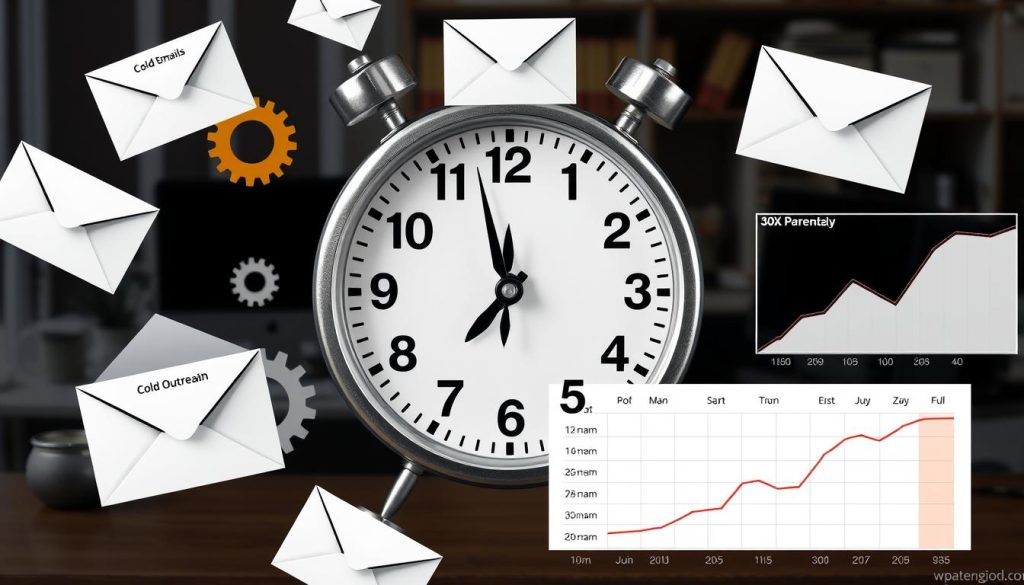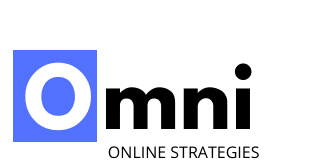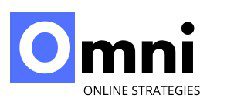Cold emails remain a powerful tool for business brokers seeking to generate leads and close deals. In today’s competitive market, mastering the art of cold emailing can set you apart from the crowd. This guide will explore cutting-edge strategies to elevate your cold email game and boost your success rate as a business broker.
We’ll dive into proven techniques for crafting compelling subject lines, personalizing your messages, and timing your outreach for maximum impact. You’ll learn how to leverage data analytics to refine your approach and scale your efforts without losing that crucial personal touch.
Whether you’re new to cold emailing or looking to refine your existing strategies, this comprehensive guide will equip you with the tools and knowledge to transform your lead generation efforts and grow your business brokerage practice.
Key Takeaways
- Craft personalized cold emails to stand out in crowded inboxes
- Use data-driven strategies to optimize email timing and content
- Leverage automation tools to scale your cold email campaigns
- Implement A/B testing to improve subject lines and response rates
- Follow legal guidelines to ensure compliance in your email outreach
- Track key metrics to continuously improve your cold email performance
Understanding the Basics of Cold Emailing
Cold emailing is a vital tool for business brokers seeking new clients. This section delves into what cold emails are, why they matter, and how they differ from other outreach methods.
What is Cold Emailing?
Cold emailing involves sending unsolicited emails to potential clients. For business brokers, it’s a way to reach out to business owners who might be considering selling. These emails aim to start conversations and build relationships.
Why Cold Emails Are Important for Business Brokers
Cold emails help business brokers expand their network and find new opportunities. They allow for direct communication with decision-makers, bypassing gatekeepers. This method is cost-effective and can lead to valuable connections.
Key Differences Between Cold Emails and Other Outreach Methods
Cold emails differ from other outreach methods in several ways. Unlike cold calling, they’re less intrusive and give recipients time to consider the offer. Compared to social media outreach, cold emails provide more privacy and personalization.
| Outreach Method | Intrusiveness | Personalization | Response Rate |
|---|---|---|---|
| Cold Emails | Low | High | Medium |
| Cold Calling | High | Medium | Low |
| Social Media | Medium | Low | Medium |
Understanding these basics helps business brokers craft effective email outreach strategies. By leveraging cold emails, brokers can connect with potential clients and grow their business more efficiently.
Crafting the Perfect Cold Email Subject Line
Subject lines play a crucial role in cold emails. They determine whether your message gets opened or ignored. Crafting compelling subject lines requires skill and strategy.
Tips for Writing Eye-Catching Subject Lines
Keep subject lines short and snappy. Use personalization to grab attention. Create urgency or curiosity to entice opens. Avoid spammy words that trigger filters. Test different approaches to see what works best for your audience.
- Keep it under 50 characters
- Include the recipient’s name
- Ask a question
- Use numbers or statistics
- Highlight a benefit
Examples of Successful Subject Lines
Let’s look at some subject lines that have proven effective for business brokers:
| Subject Line | Why It Works |
|---|---|
| [Name], interested in selling your business? | Personal and direct |
| 5 reasons to consider a business valuation | Offers value and uses a number |
| Quick question about [Company Name] | Creates curiosity |
| Maximize your exit strategy in 30 days | Promises quick results |
A/B Testing for Subject Lines
A/B testing helps optimize subject lines. Send two versions to small groups of recipients. Track open rates to determine which performs better. Use the winning subject line for your main campaign. Continuously test and refine your approach for best results.
Remember, effective subject lines can significantly boost your cold email success. Keep testing and improving to find what resonates with your audience.
Personalization: The Secret Ingredient
In the world of cold emails, personalization is the key to standing out in crowded inboxes. Business brokers who master this art can significantly boost their email outreach success rates.
Why Personalization Matters
Personalized cold emails show recipients you’ve done your homework. They create a connection, making prospects more likely to engage. Generic messages often get ignored, but tailored content catches attention and builds trust.
Techniques to Personalize Cold Emails
Effective personalization goes beyond using a recipient’s name. Research your prospect’s business, recent achievements, or industry challenges. Mention specific details that resonate with their situation. Use a conversational tone that matches their company culture.
Tools for Automating Personalization
While personalization is crucial, it can be time-consuming. Luckily, there are tools to help automate this process without losing the personal touch:
| Tool | Feature | Benefit |
|---|---|---|
| Mailshake | Dynamic fields | Inserts custom info into templates |
| Lemlist | Image personalization | Creates custom visuals for each recipient |
| Hunter.io | Email verification | Ensures accurate recipient information |
By leveraging these techniques and tools, business brokers can craft personalized cold emails that resonate with prospects, increasing the chances of successful email outreach campaigns.
Establishing Credibility and Trust
Business brokers need to build trust quickly in cold emails. This section explores effective ways to showcase expertise and gain credibility with potential clients.
Showcase Your Expertise
Highlighting your knowledge and experience is crucial. Share industry insights or recent market trends to demonstrate your expertise. For example, mention successful deals you’ve closed or discuss your specialization in specific business sectors.

Utilizing Testimonials and Case Studies
Testimonials from satisfied clients can significantly boost your credibility. Include brief, impactful quotes that highlight your skills and results. Case studies offer detailed proof of your abilities, showing how you’ve helped businesses similar to your prospect’s.
| Testimonial Type | Impact | Best Practice |
|---|---|---|
| Client Quote | Quick Trust Builder | Use 1-2 sentences max |
| Case Study | Detailed Proof | Highlight ROI or deal value |
| Video Testimonial | Personal Connection | Link to short 30-second clip |
The Role of Professional Design
A well-designed email template reflects your professionalism. Use a clean layout with your company logo and consistent branding. This visual appeal can enhance your perceived credibility and make your message more memorable.
“The design of your email is the handshake before the conversation. Make it firm and professional.”
The Structure of an Effective Cold Email
Crafting cold emails requires a strategic approach to structure and content. Understanding the key components of a well-crafted email can significantly boost your chances of success as a business broker.
Essential Components of a Cold Email
A successful cold email structure includes several crucial elements. The subject line grabs attention, while the opening line establishes relevance. The body presents your value proposition, and the closing includes a clear call to action.
| Component | Purpose | Example |
|---|---|---|
| Subject Line | Capture attention | Exclusive Business Opportunity: [Company Name] |
| Opening Line | Establish relevance | I noticed your interest in expanding your business portfolio |
| Body | Present value proposition | Our firm specializes in matching investors with high-growth businesses |
| Closing | Include call to action | Would you be open to a 15-minute call to discuss this opportunity? |
The Importance of a Clear Call to Action
A clear call to action guides recipients on the next steps. It should be specific, actionable, and easy to follow. For example, “Schedule a 15-minute call” or “Reply with your best time for a brief chat” are effective calls to action in cold emails.
Length and Formatting Tips
Keep your cold emails concise and scannable. Aim for 3-5 short paragraphs. Use bullet points to highlight key information. Bold important phrases sparingly. A well-formatted email respects the recipient’s time and increases the likelihood of a response.
- Keep paragraphs to 2-3 sentences
- Use white space for readability
- Highlight key points with bullet points
- Ensure mobile-friendly formatting
By mastering these elements of cold email structure, business brokers can create compelling messages that resonate with potential clients and drive engagement.
Timing Your Cold Email Outreach
Mastering the art of cold email timing can significantly boost your success as a business broker. Knowing when to send your messages can make the difference between a response and radio silence.
Best Days and Times to Send Emails
Research shows that Tuesday and Thursday mornings between 10 AM and 11 AM local time often yield the highest open rates for cold emails. This timing catches recipients when they’re settled into their workday but before lunch.

How Timing Affects Response Rates
Proper email timing can increase response rates by up to 30%. Sending during off-hours or weekends typically results in lower engagement. A well-timed email lands at the top of the inbox when your prospect is most likely to read it.
| Day | Best Time | Average Response Rate |
|---|---|---|
| Tuesday | 10:00 AM | 25% |
| Thursday | 10:30 AM | 23% |
| Wednesday | 2:00 PM | 20% |
Using Analytics to Determine Optimal Timing
Leverage email analytics tools to track open and response rates. Test different send times and analyze the data to find what works best for your specific audience. Remember, optimal timing may vary based on industry and individual preferences.
“The right timing can turn a cold email into a warm lead. Test, analyze, and refine your approach for maximum impact.”
By fine-tuning your cold email timing strategy, you’ll improve your chances of connecting with potential clients and growing your business brokerage practice.
Following Up: The Art of Persistence
Mastering follow-up emails is crucial for successful cold outreach and lead generation. A well-crafted follow-up strategy can significantly boost your response rates and help you close more deals.
Optimal Number of Follow-Ups
Finding the right balance in follow-up frequency is key. Most experts recommend sending 2-3 follow-up emails after your initial cold email. This approach shows persistence without being overly aggressive.
Crafting Effective Follow-Up Messages
Your follow-up emails should add value and not just repeat your initial message. Include new information, address potential objections, or offer additional resources. Keep your tone friendly and professional to maintain a positive connection with your prospects.
- Reference your previous email
- Provide a clear, specific call-to-action
- Keep it short and focused
- Offer something of value
Timing Your Follow-Ups for Impact
Timing is critical in follow-up emails. Space out your messages to avoid overwhelming your prospects. A common schedule might look like this:
| Follow-Up | Timing |
|---|---|
| 1st | 3-4 days after initial email |
| 2nd | 7-10 days after 1st follow-up |
| 3rd | 14-21 days after 2nd follow-up |
Remember, persistence pays off in cold emailing. By crafting thoughtful follow-up emails and timing them strategically, you can significantly improve your lead generation efforts and build meaningful business relationships.
Analyzing Your Cold Email Campaigns
Tracking the performance of your cold emails is crucial for refining your outreach strategy. By leveraging email analytics and campaign tracking, you can gain valuable insights to boost your success rate.
Metrics to Track for Success
To gauge the effectiveness of your cold emails, focus on these key metrics:
- Open rate: The percentage of recipients who open your email
- Click-through rate (CTR): How many recipients click on links in your email
- Response rate: The number of replies you receive
- Conversion rate: How many leads turn into actual clients
- Bounce rate: The percentage of undelivered emails
Tools for Email Tracking and Analytics
Several tools can help you monitor your cold email campaigns:
| Tool | Features | Best For |
|---|---|---|
| Mailchimp | Comprehensive analytics, A/B testing | Small to medium businesses |
| HubSpot | CRM integration, detailed reporting | Large enterprises |
| Yesware | Real-time tracking, templates | Sales teams |
Adjusting Your Strategy Based on Data
Use the insights from your email analytics to refine your approach. If open rates are low, experiment with different subject lines. For poor click-through rates, revise your email content and call-to-action. Remember, campaign tracking is an ongoing process. Continuously test and adjust your cold emails to improve your results over time.
Legal Considerations for Cold Emailing
Cold emails are powerful tools for business brokers, but they come with legal responsibilities. Understanding these rules helps you stay compliant and build trust with potential clients.
Understanding CAN-SPAM Compliance
The CAN-SPAM Act sets rules for commercial emails. To comply, include your business address, a clear way to opt-out, and honest subject lines. Avoid deceptive headers and always honor opt-out requests promptly.
Importance of Respecting Privacy Laws
Privacy laws protect individuals’ data. When sending cold emails, ensure you have permission to use contact information. Be transparent about how you got their details and why you’re reaching out. This builds trust and keeps you on the right side of privacy laws.
| Privacy Law | Key Requirements |
|---|---|
| GDPR (EU) | Explicit consent, right to erasure |
| CCPA (California) | Disclosure of data collection, opt-out rights |
| CASL (Canada) | Express or implied consent, unsubscribe mechanism |
How to Handle Opt-Out Requests
Respect opt-out requests swiftly. Remove requesters from your list within 10 business days. Make the process simple – a single click should suffice. Keep records of opt-outs to avoid future contact. This practice not only follows the law but also preserves your reputation.
“Respecting opt-outs isn’t just legal compliance; it’s about building trust and maintaining professional integrity in your cold email campaigns.”
By following these guidelines, your cold emails will not only reach their targets but do so legally and ethically, setting a foundation for successful business relationships.
Scaling Your Cold Email Efforts
As business brokers grow their clientele, scaling cold email efforts becomes crucial. The $1.8 billion industry demands efficient outreach strategies to stay competitive. Let’s explore how to expand your reach while maintaining effectiveness.
When to Consider Automation Tools
When your cold email volume increases, automation tools can be a game-changer. These platforms help manage larger contact lists and streamline follow-ups. But timing is key. Consider automation when you’re consistently sending over 100 emails weekly or struggling to keep up with responses.
Balancing Personal Touch with Efficiency
While email automation boosts efficiency, it’s vital to maintain a personal touch. Business brokers can use personalized cold to connect with prospects effectively. Blend automated sequences with custom elements like industry-specific insights or recent company news to keep your messages relevant and engaging.
Leveraging Your Network for Greater Reach
Your professional network can amplify your cold email efforts. Encourage referrals from satisfied clients and partners. Use LinkedIn Sales Navigator to identify mutual connections and mention them in your outreach. This approach adds credibility to your cold emails and increases the likelihood of a positive response.
FAQ
What is the ideal length for a cold email?
The ideal length for a cold email is typically between 50-125 words. This length allows you to convey your message concisely while maintaining the recipient’s attention. Remember to focus on the key points and include a clear call to action.
How often should I follow up on a cold email?
It’s generally recommended to follow up 2-3 times after your initial cold email. Space out your follow-ups, with the first one sent 3-4 days after the initial email, the second after a week, and the third after another week. Be persistent but respectful, and always provide value in each follow-up.
What are some effective subject lines for business broker cold emails?
Effective subject lines for business broker cold emails should be concise, personalized, and intriguing. Examples include: “Opportunity: Maximize Your Business’s Value”, “[Name], Considering Selling Your Business?”, or “Quick Question About [Company Name]’s Future”. Always A/B test your subject lines to optimize performance.
How can I personalize my cold emails at scale?
To personalize cold emails at scale, use automation tools that allow for dynamic content insertion. Research your prospects and include relevant details like their company name, recent achievements, or industry-specific challenges. Segment your email list and create tailored templates for each group to increase relevance and engagement.
What are the key metrics to track in a cold email campaign?
The key metrics to track in a cold email campaign include open rate, click-through rate (CTR), response rate, conversion rate, and bounce rate. These metrics provide insights into the effectiveness of your subject lines, email content, call-to-action, and overall campaign performance.
How can I ensure my cold emails comply with legal regulations?
To ensure legal compliance, familiarize yourself with the CAN-SPAM Act and other relevant privacy laws. Always include a clear way to opt-out of future emails, use accurate header information, and avoid deceptive subject lines. Be transparent about your identity and purpose, and promptly honor all opt-out requests.
What’s the best time to send cold emails?
Generally, the best times to send cold emails are Tuesday through Thursday, between 10 AM and 2 PM in the recipient’s time zone. However, optimal timing can vary depending on your specific audience. Use email analytics tools to test different send times and determine what works best for your target market.
How can I improve my cold email response rates?
To improve cold email response rates, focus on personalization, create compelling subject lines, keep your message concise and value-focused, include a clear call-to-action, and follow up strategically. Additionally, ensure your email list is well-targeted and regularly cleaned to maintain high deliverability rates.
What tools can help me automate my cold email outreach?
Several tools can help automate cold email outreach, including Woodpecker, Lemlist, Reply.io, and Mailshake. These platforms offer features like personalization at scale, automated follow-ups, A/B testing, and performance analytics. Choose a tool that integrates well with your existing CRM and email systems.
How can I establish credibility in my cold emails as a business broker?
To establish credibility, showcase your expertise by mentioning relevant experience, successful deals, or industry recognition. Include brief case studies or testimonials from satisfied clients. Use professional email design and signatures, and provide links to your website or LinkedIn profile for further validation of your credentials.


